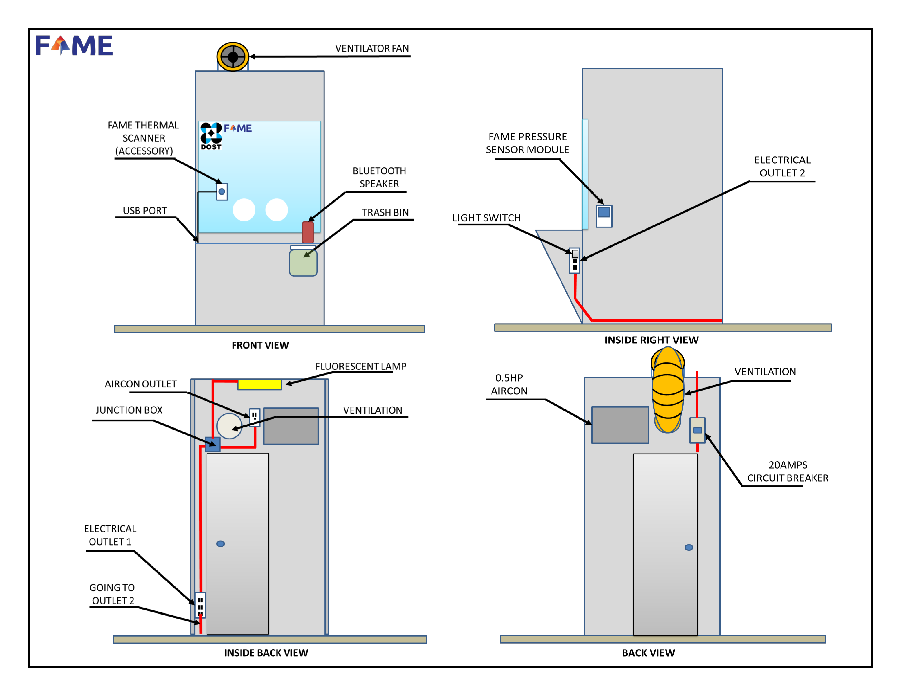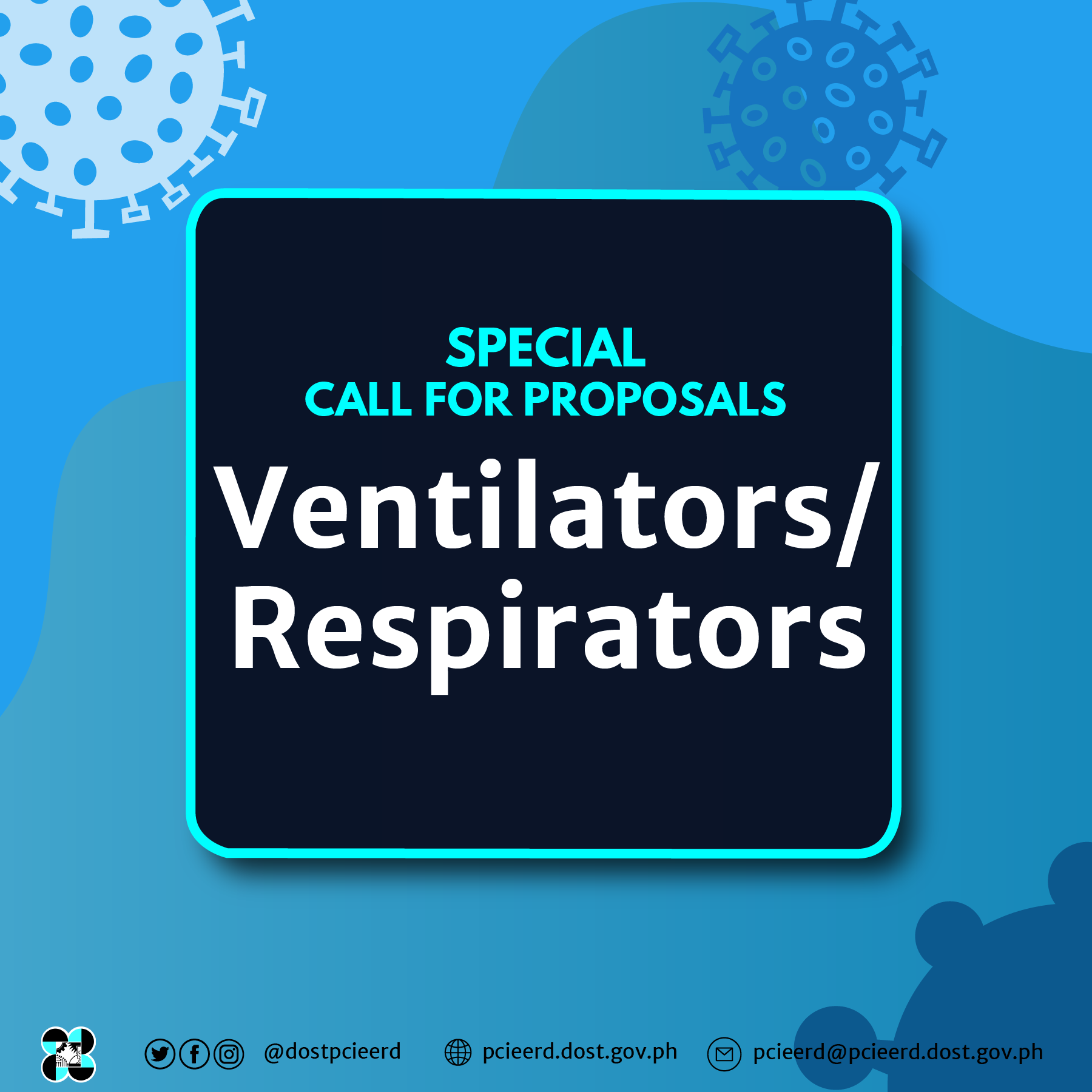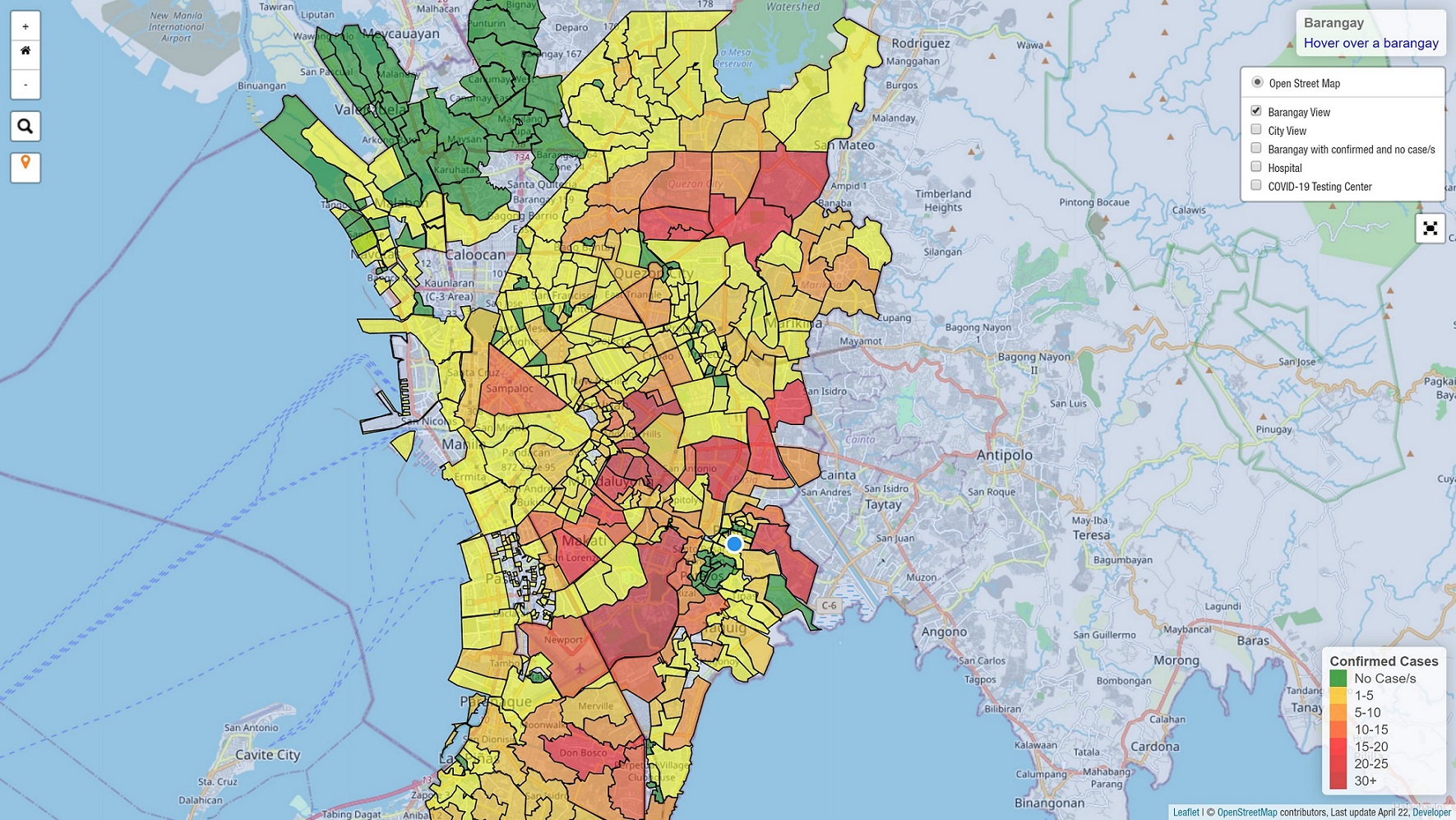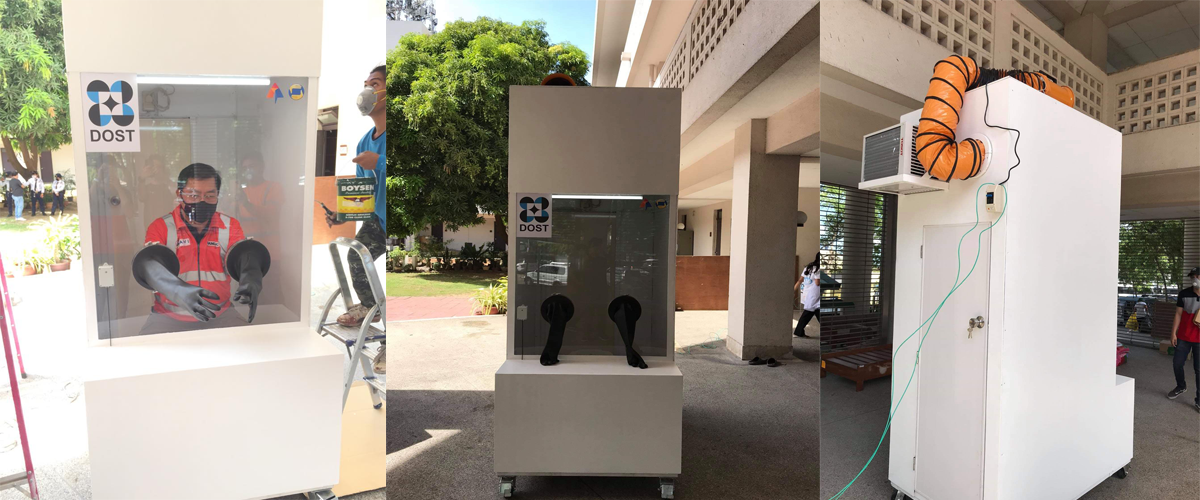Filipino innovators are making the adage “necessity is the mother of invention” into reality.
The Department of Science and Technology – Philippine Council for Industry, Energy and Emerging Technology Research and Development (DOST-PCIEERD) acknowledges innovative Filipinos who have come up with brilliant technologies to combat the COVID-19 pandemic.
Featuring personalize contact tracing, health assessment and monitoring, and community monitoring - these initiatives showcase the ingenuity and talent of Filipinos online innovators in fighting the global pandemic.
DOST-PCIEERD Executive Director Dr. Enrico Paringit expressed elation over the ingenuity of Filipinos who came up with innovations to fight the global pandemic.
"As leader and partner in enabling innovations in the country, we recognize and urge the public to support these new technologies developed by our brave countrymen,” Paringit said.
Contact-tracing apps and systems. Contact-tracing apps were designed to encourage Filipinos to help in the contact tracing of COVID-19-infected individuals:
- BirdsEye – Developed by University of San Carlos (USC) faculty members and students, this app encourages self-reporting with the following key features: location mapping and matching, transportation matching and mapping, temperature management, mass testing management and contact tracing. Through these features, it determines COVID-19 hotspots of specific places (i.e. malls, hotels and more) and modes of transportation of where virus carriers have visited. BirdsEye is now available on Google Play.
- QVID – QVID is contact tracing system for LGUs with the use of QR Codes. It introduces uniformity of simple and secured data gathering for end-users with or without smart phones by empowering barangay-based registration with the barrio system apps: barrio.citizen and barrio.council. In normal times, QVID's data backbone, barrio.system is ideal for seamless delivery of public services to targeted constituents just like the objectives of the National ID System. Designed and developed by ARKITEK, an Iloilo-based startup focused on providing solutions based from existing laws in collaboration with government agencies and local governments.
- COVID19TRACKER.PH - This is a free, community-based contact tracing tool that uses Bluetooth signals to log your closed contacts in the database. The user will be immediately alerted if you are in closed contact with a confirmed COVID-19 patient for the last 14 days. You can also monitor your status, whether you are a Suspect, Probable, Confirmed, or a Recovered patient.
- WeTrace - WeTrace is a community tracing app developed by the same team under Genii Hut Technologies Incorporated, a DOST-funded startup, and was endorsed by the provincial government of Cebu for mandatory use in the province. The app can be used for patient mapping, case reporting and location tracking. WeTrace is already available for download on Google Play and Apple Appstore.
- BYNHN Covid-19 QR Location & Health Status Tracker - Bayanihan (BYNHN) is a security and health code app tailored fit for Filipino nuances and based on international measures to combat COVID-19. It is designed to monitor and log the location of individuals by having an anonymized QR code in every individual profile, establishment and transportation services. The system may flag those who are at risk of coming into contact with an individual who tested positive using the log in the database of the application.
- iKeepUSafe -The iKeepUSafe App allows the user to take a self-assessment questionnaire to assess their risk, and inform the public on the privacy of their homes. The system finds everyone who has come within 3 meters and the range of time [based on recorded travel points] that newly reported PUI has stayed in a place plus a window of four (4) hours. Currently, the developer has ongoing talks with the Sta. Rosa Laguna LGU.
- CLEAR (Citizen's Logistics & Early Assessment Report) - C.L.E.A.R. is a web-based application that is also available on mobile, that provides Local Government Units and Business Units with a means to organize their initiatives to combat COVID19. It gathers data through several methods that include manual and automated functionalities that would seek to generate data specific to COVID19. Developed by Spring Valley and CMI Tech, C.L.E.A.R. aims to empower its Users by providing them the means to gather, organize and analyze information to arrive at the most efficient solution to contain, and eventually eliminate the COVID19 Pandemic. C.L.E.A.R. is also essential to transition out of the Enhanced Community Quarantine as it provides visibility and control to industries, enabling them to self-manage their respective workforce.
Personal health assessment and monitoring tools. To avoid further community transmission, health assessment and monitoring tools help people evaluate and submit their current health status in the comfort of their own home. These will also aid them determine whether they need to seek immediate medical care.
- ENDCoV – This is a community-driven medical information app that identifies the health condition of a user and provides the corresponding recommendation, establishes a directory of persons and journal of places that the user has made contact with, and provides mass notification to persons with whom a COVID-19 positive patient had made prior contact with. Three (3) days after the launch of the app, it officially reached more than 5,000 users and is now the number one (1) free medical application on Google Play.
- COVID-19 SCAN: Screening, Assessment, Networking - Senti AI, the country’s leading artificial intelligence (AI) company, designed this self-assessment app to aid users in determining proper action to take given the symptoms being experienced and history of travel encoded. Moreover, it contains up-to-date health information on COVID-19 to support users in managing their health and well-being in this time of health crisis. Senti AI is a DOST-PCIEERD Startup Grant Awardee which developed a machine-learning-based language classifier that automatically detects the language of any document.
At the end of the self-assessment survey, the user will be asked if they want their case to be submitted to the health authorities within their jurisdiction for evaluation. The health authorities will have access to the web application using their unique login credentials.
- AI-enhanced knowledge management tool – Also developed by Senti AI, the tool will be implemented as the “central brain” for the Department of Health’s (DOH) communication channels. The tool will be filled with FAQs, public or health worker inquiries, and the latest guidelines from DOH. The solution makes use of numerous AI technologies including natural language understanding, intent detection, and entity detection to intelligently capture the context behind an inquiry and provide the most relevant, up-to-date answer from DOH’s official knowledge base.
The tool can easily be integrated to various chatbot providers which unburdens the user from sifting through hundreds of documents with different versions of the same policy. Ultimately, the biggest value of the tool is ensuring that all governing entities from the cities to remote areas of the country can be in sync with the latest official guidelines.
- Barvid-19 – Developed by students from the Technological Institute of the Philippines, the COVID-19 Barangay Tracker is a barangay and city-wide tracker that can help the public identify the number of people infected with COVID-19 and the specific barangay where they are. At present, data that can be seen in the app are for the cities of Manila, Pasay, Caloocan and Navotas. The site can be accessed at https://barvid19-tracker.herokuapp.com.
Goods and supplies delivery system were also developed to ensure steady supply of goods sold in local stores and access by communities.
- Fleet.PH - Fleet.PH created a logistics strategy to have visibility and to optimize activities of logistics deliveries in the Philippines with the current scenario. It aims to help businesses explore, activate delivery support to reach customers, and provide livelihood to Filipinos who lost employment opportunities during the ECQ, and to safely transport supplies, especially to the country’s brave frontliners.
LGU-level community monitoring. Communities need to be closely monitored to ensure that each Filipino is protected from the spread of COVID-19. These tools can aid community leaders and LGUs in keeping a watchful eye on the whole community amid the pandemic.
- Use of AI for City Watch Initiative – Project Greengrass made a free online community map of real-time street activity monitoring using CCTV networks. It allows the community to have a view on what’s happening in their barangays or cities such as people and vehicle count. LGU authorities can efficiently manage their operations and staff and help them ensure that the enhanced community quarantine (ECQ) protocols are followed. Interested LGUs can contact the project team at This email address is being protected from spambots. You need JavaScript enabled to view it. or (02)8253-3815.
- SafeTravelPH – This app is a crowdsourcing tool developed by the University of the Philippines National College of Public Administration and Governance (UP-NCPAG) for users to easily report road and other transport incidents in their area that are related to the ECQ. These reports will be relayed to national and local authorities for their immediate action. The app also supports disease spread monitoring and control, emergency logistics, and disaster relief operations. Real-time updates and data from the app will be useful to community leaders.
This initiative is part of the efforts of the UP COVID-19 response team that empowers communities by enhancing the Filipino value of bayanihan. The developers of the app are currently waiting for the approval of Google Play for it to be available to Filipinos.
- COVID-19 Symptom Tracker – Accessed at https://symptom-tracker.tedhouse.org/, this is a simple website developed by researchers from De La Salle University – Laguna Campus that allows individuals to easily declare symptoms which will be tagged in the area where these individuals reside. After submitting the symptoms, personal information such as age and gender, are the only required personal information to be filled in. The self-reported symptoms are then projected to a map for easy visualization that will be useful for decision-making purposes.
- PH Kontra Covid – This is an initiative of the Department of Health (DOH) in collaboration with technology partners AI4GOV and AIAH.AI. It is a system with a web-based digital triage platform and chatbots deployed in Viber and Facebook messenger. The web app and the Viber bot serves as a digital triage tool with the latest algorithm approved and endorsed by DOH, based on the latest case definitions and classification. Another tool “KIRA (Katuwang na Impormasyon para sa Responsableng Aksyon) Kontra COVID” is a bot deployed at the official DOH page that provides the most updated information from guidelines and issuances.
The tools are intended to reach low-income users by enabling access to fast, credible, and bite-sized information and leverages the connectivity of Filipinos in social media. The platform mitigates the spread and effect of false information as it becomes recognized as a reliable and verified source of information. The data on potential cases reported from the digital triage from the web application and Viber will be synchronized with the DOH COVID information system and planned data warehouse. This will enable predictive analytics for the spread of COVID-19, strengthen the referral system, and converge efforts in enabling data-driven and empathetic responses to COVID-19.
With the continued initiatives of the government to combat and contain the pandemic, it is expected that many individuals, leaders, LGUs, and policy makers will find these technologies useful and helpful.
“As physical interaction is highly avoided to prevent further spread of the virus, innovations should be leveraged now, more than ever, to assist and boost Philippines’ efforts in pandemic monitoring, control and treatment, virus tracking, and resource delivery,” Paringit said.








